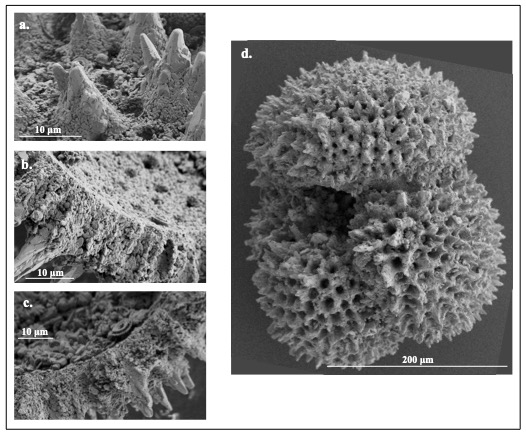Between 59 million and 51 million years ago, Earth experienced dramatic warming periods—both a gradual one stretching millions of years, and more sudden spikes known as hyperthermals, measured in thousands to tens of thousands of years. Scientists agree that higher temperatures were driven in large part by increases in the amount of carbon dioxide in the atmosphere. But so far, the exact quantitative correspondence between the two factors has been hard to pin down.
A new study pairs sea-surface temperatures with levels of atmospheric CO2 during these times, showing the two were closely linked. The study, just published in the journal Proceedings of the National Academy of Sciences, suggests CO2 emissions during two ancient hyperthermals were similar enough to today’s human-driven emissions that they can help scientists refine models of how fast climate will warm in the future. These models currently forecast an eventual rise in global temperatures of 5.1 to 5.3 degrees C (9.1 to 9.5 F) if human emissions double the amount of CO2 in the atmosphere.
“The main reason we are interested in these global carbon release events is because they can provide analogs for future change,” said lead author Dustin Harper, a postdoctoral researcher at the University of Utah.
The researchers used sediment cores taken from the bottom of the Pacific Ocean that contained shells formed by ancient microscopic creatures who once lived near the surface. By analyzing the shells, they were able to characterize ocean-surface chemistry at the times when the creatures were alive. Combined with a sophisticated statistical model, they reconstructed the relationship between sea-surface temperatures and atmospheric CO2 levels over a 6-million-year period that covered two hyperthermals: the Paleocene-Eocene Thermal Maximum, or PETM, 56 million years ago, and the Eocene Thermal Maximum 2, or ETM-2, some 54 million years ago. The Earth was far warmer than today during both periods; polar ice sheets did not yet exist, and tropical Pacific ocean temperatures peaked at more than 100 degrees F.

The total amount of carbon released during the ancient hyperthermals was similar to the range projected for ongoing and future human emissions. However, human activities are releasing carbon four to 10 times more rapidly than during the hyperthermals.
“These hyperthermals form the closest natural analogs to human CO2 emissions [today],” said study coauthor Bärbel Hönisch, a geochemist at the Columbia Climate School’s Lamont-Doherty Earth Observatory. “They are somewhat different in that they were driven by natural causes, and their onset was spread out over a few thousand years rather than the [time] since industrialization began.” But, she said, they are close enough that they can help scientists estimate the long-term warming consequences of modern CO2 emissions.
At the start of the industrial age, some 170 years ago, atmospheric CO2 levels were about 280 parts per million; thanks to human emissions, they are now up to about 420 ppm. Doubling over preindustrial times will be reached at 560 ppm—a level expected within the next three to five decades if business continues as usual. Scientists say that if this happens, the projected 9-plus degrees F of warming will take longer, but how much longer—decades, centuries or millennia—is uncertain. Temperatures have already risen by about 1.8 degrees F, and are projected to continue going up even if current CO2 levels were to remain unchanged.
“There are delays that models have to factor in for our modern world, and we cannot resolve those delays in the sedimentary record,” said Hönisch. “It requires a different model to estimate how warm exactly it will be by the time we reach 560 ppm, because there was no ice on the poles during the Paleocene and Eocene. Deep ocean circulation will take up a lot of CO2 and heat, but one full loop of ocean circulations takes about a thousand years to complete.”
The study’s authors say the long, gradual warming trends of the Paleocene and Eocene appear to have been driven by a combination of tectonic forces rearranging the Earth’s landmasses, and a decrease in the burial of organic matter, so that more carbon was left in the atmosphere rather than being sent to the bottom of the ocean. The supercharged hyperthermals seem to have occurred when lava met up with and burned massive deposits of organic sediments, releasing the carbon they contained into the air.
“These [hyperthermals] might represent a mid- to worst-case scenario kind of case study,” Harper said. “We can investigate them to answer: What’s the environmental change that happens due to this carbon release?”
The research team based the study on cores previously extracted by the International Ocean Discovery Program at two locations in the Pacific. To determine oceanic CO2 levels, the researchers turned to fossilized remains of foraminifera, single-cell. shell-building plankton. The shells of the forams, as they are informally known, accumulate small amounts of the element boron, the isotopes of which reflect CO2 concentrations in the ocean at the time the shells formed, according to previous work by Hönisch and others.
The researchers measured the boron chemistry of the shells, and were able to translate those values to past seawater atmospheric CO2 contents by comparing the values to modern observations.
The cores were extracted from the Shatsky Rise, an underwater plateau in the subtropical North Pacific east of Japan, an ideal location for recovering ocean-bottom sediments that reflect ancient conditions. Carbonate shells dissolve if they settle into the deep ocean, so scientists must look to plateaus like the Shatsky, where water depths are a relatively shallow 2 kilometers or so.
The study was coauthored also by researchers from the University of California Santa Cruz, Vassar College and the University of Hawaii. It was funded by the U.S. National Science Foundation.
Based in part on a press release by the University of Utah.




No Comments
Leave a comment Cancel